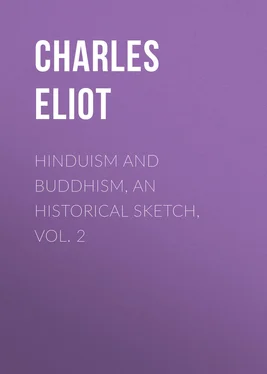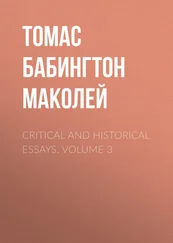Abstract by Raj. Mitra, Nepalese Buddhist Lit. pp. 81 ff. Quoted in Śântideva's Bodhicaryâvatâra, VIII. 106.
See J.R.A.S. 1911, 663.
Abstract by Raj. Mitra, Nepalese Buddhist Lit. pp. 81 ff.
Translated in part by Beal, Catena of Buddhist Scriptures , pp. 286-369. See also Teitaro Suzuki, Outlines of Mahâyâna , p. 157. For notices of the text see Nanjio, Nos. 399, 446, 1588. Fa-Hsien, chap. XXIX. For the equivalence of Shou-lêng-yen and Śûrangama see Nanjio's note to No. 399 and Julien, Méthode , 1007 and Vasilief, p. 175.
See Śikshâs, ed. Bendall, pp. 8,91 and Hoernle, Manuscript remains , I. pp. 125 ff.
Mahâyâna-sûtrâlankâra, XIX. 29.
E.g. the Râshtra-pâla-paripṛicchâ edited in Sanskrit by Finot, Biblioth. Buddhica , 1901. The Sanskrit text seems to agree with the Chinese version. The real number of sûtras in the Ratnakûṭa seems to be 48, two being practically the same but represented as uttered on different occasions.
There is another somewhat similar collection of sûtras in the Chinese Canon called Ta Tsi or Mahâsannipâta but unlike the Ratnakûṭa it seems to contain few well-known or popular works.
I know of these works only by Raj. Mitra's abstracts, Nepal. Bud. Lit. pp. 95 and 101. The prose text is said to have been published in Sanskrit at Calcutta, 1873.
Raj. Mitra, Nepalese Buddhist Lit . pp. 285 ff. The Sanskrit text was published for the Buddhist Text Society, Calcutta, 1898.
Avadâna is primarily a great and glorious act: hence an account of such an act.
The Avadâna-śataka (Feer, Annales du Musée Guimet , XVIII) seems to be entirely Hinayanist.
Edited by Senart, 3 vols. 1882-1897. Windisch, Die Komposition des Mahâvastu , 1909. Article "Mahavâstu" in E.R.E.
So too do the words Horâpâthaka (astrologer), Ujjhebhaka (? Uzbek), Peliyaksha (? Felix). The word Yogâcâra (I. 120) may refer simply to the practice of Yoga and not to the school which bore this name.
Edited by Cowell and Neil, 1886. See Nanjio, 1344.
Edited by Bendall in Bibl. Buddhica.
Nanjio, No. 1466. For a learned discussion of this work see Lévi and Chavannes in J.A. 1916, Nos. I and II.
It is not likely that the Tathâgata-guhya-sûtra which it quotes is the same as the Tantra with a similar name analysed by Rajendralal Mitra.
Watters, J.R.A.S. 1898, p. 331 says there seems to have been an earlier translation.
Many works with this title will be found in Nanjio.
But the Chinese title seems rather to represent Ratnarâsi.
See Nanjio, pp. xiii-xvii.
Mahâyâna-sûtrâlankâra. See Lévi's introduction, p. 14. The "Questions" sutra is Brahma-paripṛicchâ.
Translated by Schiefner, 1869. Târanâtha informs us (p. 281) that his chief authorities were the history of Kshemendrabhadra, the Buddhapurâna of Indradatta and Bhaṭaghaṭî's history of the succession of the Âcâryas.
The Tibetans generally translate instead of transliterating Indian names. It is as if an English history of Greece were to speak of Leader of the People instead of Agesilaus.
They place Kanishka, Vâsishka, Huvishka and Vasudeva before Kadphises I and Kadphises II.
E.g. Staël Holstein who also thinks that Kanishka's tribe should be called Kusha not Kushan. Vincent Smith in his latest work ( Oxford History of India , p. 130) gives 120 A.D. as the most probable date.
My chief difficulty in accepting 78-123 A.D. as the reign of Kanishka is that the Chinese Annals record the doings of Pan Ch'ao between 73 and 102 in Central Asia, with which region Kanishka is believed to have had relations, and yet do not mention his name. This silence makes it primâ facie probable that he lived either before or after Pan Ch'ao's career.
The catalogues of the Chinese Tripitaka state that An-Shih-Kao (148-170 A.D.) translated the Mârgabhûmi-sûtra of Sangharaksha, who was the chaplain of Kanishka. But this unfortunately proves nothing except that Kanishka cannot have been very late. The work is not a scripture for whose recognition some lapse of time must be postulated. An-Shih-Kao, who came from the west, may very well have translated a recent and popular treatise.
In this connection we may remember Târanâtha's statement that Kanishka's Council put an end to dissentions which had lasted about a century. But he also states that it was after the Council that Mahayanist texts began to appear. If Kanishka flourished about 50 A.D. this would fit in with Târanâtha's statements and what we know of the history of Buddhism.
B.E.F.E.O. 1911, 339-390. Satiśchandra Vidyâbhûshana arrived at the same conclusion in J.A.S.B. 1905, p. 227.
Chap. IV.
Mahâparinib. Sut. III.
Majj. Nik. 72.
Udâna. VIII. 1-4.
Accariyabbhutasuttam. Majj. Nik. 123.
Chap. XVI.
That of Rudradaman at Girnar, dated 72 in the Saka Era, has hitherto been considered the oldest, but it is now said that one discovered at Isapur near Muttra is older. See J.R.A.S 1912, p. 114.
E.g. Kadphises II and Vasudeva.
Chaps. XII, XIII.
The last section (42) as translated by Teitaro Suzuki in the Sermons of a Buddhist Abbot may seem an exception, for it contains such statements as "I consider the doctrine of sameness as the absolute ground of reality." But the translation seems to me doubtful.
Sec. 11.
Just as all gods and worlds are seen within Krishna's body, so we are told in the Kâraṇḍa-vyûha (which is however a later work) that in the pores of Avalokita's skin are woods and mountains where dwell saints and gods.
Bhag. G. VIII. 5.
Commentary on Dhammapada , P.T.S. edition, pp. 25 ff. especially p. 33.
See Râmânuja, Śrîbhâshya, II. 2, 27 and Padma-Purâṇa uttarakanda 43 (quoted by Suhtankar in Vienna Oriental Journ. vol. XXII. 1908). Mâyâvâdam asacchâstrâm pracchannam bauddham ucyate. The Mâdhvas were specially bitter in their denunciation of Śankara.
Or as itself forming four separate Upanishads. For other arguments in favour of an early date see Walleser, Älterer Vedânta , pp. 14 ff. He states that the Kârikâ is quoted in the Tibetan translations of Bhavaviveka's Tārkajvālā . Bhavaviveka was certainly anterior to the travels of Hsüan Chuang and perhaps was much earlier. But if he died about 600 A.D. a work quoted by him can hardly have been later than 550 and may be much earlier. But see also Jacobi in J.A.O.S. April, 1913, p. 51.
Читать дальше












